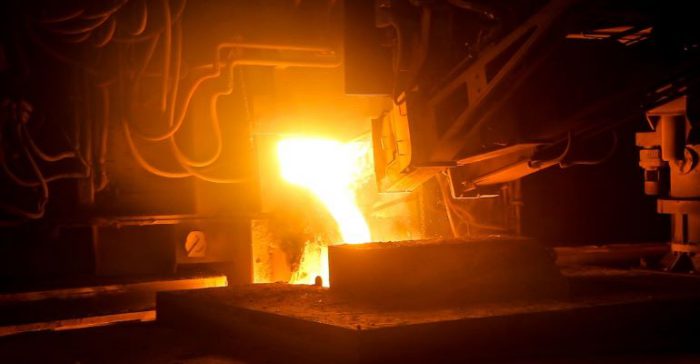Written by Kevin Boyd, ERS
When most of us head into an audit of an industrial manufacturing facility, there are plenty of systems that we’re comfortable analyzing and making recommendations for. Lighting, HVAC, motors, and compressed–air systems are all things that we keep an eye on, and this is for good reason: We have well-established, practical, and cost-effective measures for each of those technology types. An ambitious engineer might even make some recommendations about adding economizing measures for process cooling or suggest using heat exchangers on thermal oxidizers or waste fluid streams.
Still if there’s one piece of the industrial process that we hardly ever touch, it’s process heating. Not only are most of us uncertain as to what energy conservation measures (ECMs) might be recommended (beyond, perhaps, a CHP system in the right application), but even casually mentioning a potential change to the way heat is generated and moved around inside of a process is often enough to make the on-site engineers cringe and change the subject.
To understand why, let’s start by defining the problem.
Where is process heat used?
In most heavy industries, heat is used at some point in the manufacturing process to change material properties. Globally, some of the largest industries – steel, concrete, glass, chemical processing, and paper manufacturing – use massive amounts of heat.
The ways that the heat is actually applied differs significantly from industry to industry, and even within industries. For example, steel manufacturing from raw ore requires the combustion of coke, a purified coal product, to introduce carbon, provide physical support for the steel, and allow for the transport of gases out of the blast furnace. For most industries, though, heat is delivered to the process indirectly, either through the use of high-temperature heat exchangers that transfer heat from combustion products right to the process, or via a tertiary system that uses steam or high-temperature hot water to move heat from a central boiler plant to the process end use.
Just how hot are we talking?
Some processes are really hot: Steel, glass, aluminum and cement manufacturing require temperatures in excess of 1,000°C (1,832°F). Other major industries use lower temperatures, with ammonia synthesis (used to manufacture fertilizers) occurring around 500°C, oil refining occurring at around 380°C, and paper manufacturing occurring at a relatively cool 200°C.
We also can see process heating being used at lower temperatures for certain types of manufacturing. Beer brewing, for example, uses temperatures in the 100-200°C range for the kilning of malts, and a much more temperate 80°C for preparing the mash. In some cases, even space heating or humidification can be considered a process load, such as with vivarium conditioning in a pharmaceutical or laboratory setting.
The exact method of heat delivery in these processes differs based on both the required temperature and the level of acceptable contact between the combustion products and the final product. High pressure steam can provide up to around 500°C temperatures, and direct combustion heating can supply temperatures in excess of 1,500°C. The achievable temperature from direct combustion depends on the flame temperature of the fuel being used, as shown in the table below:

Comparing these with the process temperatures of the common industries listed above, it is obvious why fuel combustion is the preferred method for producing process heat: Natural gas burns hot enough to provide the temperatures necessary for almost all of the major industrial processes.
So how can we make industrial process heating more efficient?
If tasked with improving the process heat system efficiency, most ERS engineers would likely begin by looking at the feasibility of heat recovery. This is a pretty obvious idea, after all: take heat that’s being wasted, and see if you can use it somewhere else. Sometimes this involves pre-heating an incoming supply stream, as is done in a recuperative thermal oxidizer or a boiler economizer. Other times, we might get more creative by using a heat recovery boiler on the exhaust from a high-temperature process and using that hot water or steam to do something else, like space heating or supplying a lower-temperature process elsewhere in the facility.
But there is another option as well, one that we have to consider if we really want to make a dent in global industrial greenhouse gas emissions: Using alternative sources for heat.
Back in October, researchers at Columbia University’s Center on Global Energy Policy published a paper that detailed lower carbon heat sources that may be used instead of fossil fuels to produce process heat in heavy industry. The paper acknowledges that transitioning to these is going to be an immense challenge – the cost (absent externalities) and convenience of fossil fuels, with their ready-made global supply chain and the already razor-thin margins associated with industrial manufacturing, makes the prospect of moving to lower-carbon energy sources daunting. But, the authors assert, it is possible to do, and we should try.
The Columbia researchers produced the following chart, which shows that lower-carbon heat sources may be used for process heating in some of the largest heavy industries in the world:

Further, they provided a table of the available temperatures of various low-carbon heat sources:

A takeaway from the chart and table above is that there is an opportunity to use the right-temperature heat source for the different processes that we commonly work with. Is there really a need to use a 2,000°C natural gas flame to produce heat for a brewery that operates at a maximum temperature of 200°C? And can we think of ways to start incorporating some of these technologies into our recommendations?
Sources
https://en.wikipedia.org/wiki/Gas_burner#Flame_temperatures_of_common_gases_and_fuels
https://energypolicy.columbia.edu/sites/default/files/file-uploads/LowCarbonHeat-CGEP_Report_100219-2_0.pdf
https://www.process-heating.com/articles/84941-indirect-vs-direct-the-heat-transfer-method-does-affect-the-process
https://www.sciencedirect.com/science/article/pii/B9781845697693500194
